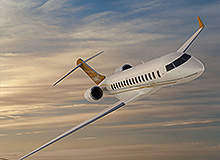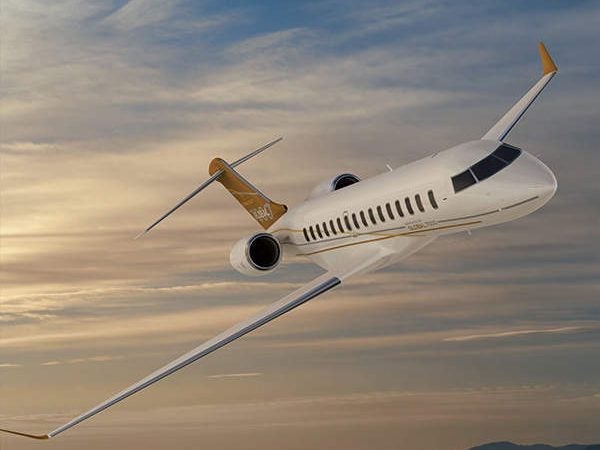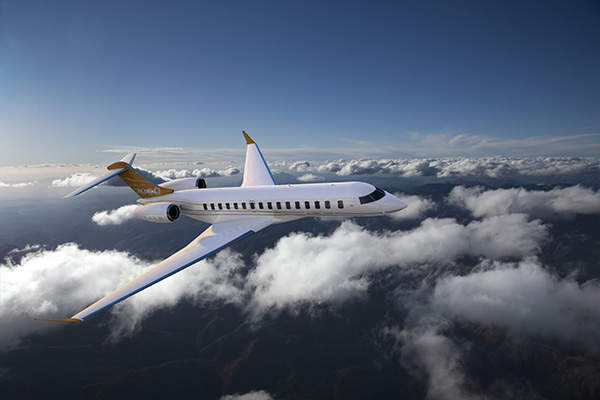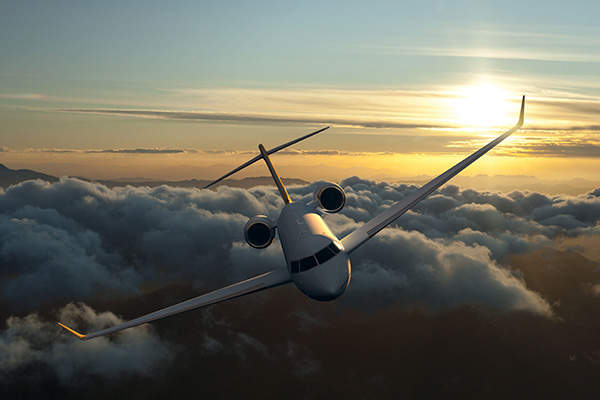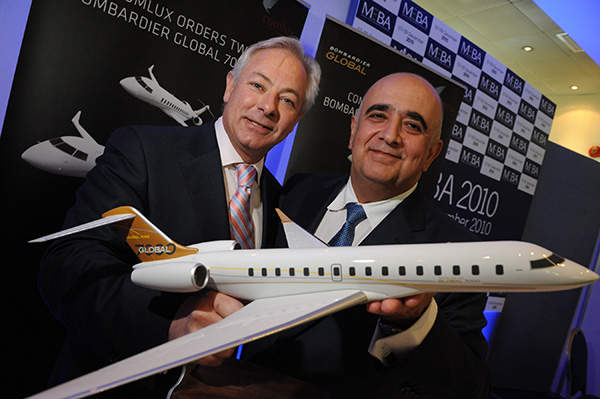Global 7500 is a high-speed business jet developed by Bombardier Aerospace. It entered service in December 2018.
It was initially named as Global 7000 business jet and was rebranded as Global 7500 at the European Business Aviation Convention and Exhibition (EBACE2018) held at Geneva, Switzerland, in May 2018.
Maiden flights of the Global 7000 Flight Test Vehicle 1 (FTV1) and the second Global 7000 Flight Test Vehicle 2 (FTV2) were conducted in November 2016 and March 2017, respectively. The maiden flight of the third Flight Test Vehicle 3 (FTV3) was completed in May 2017, followed by the fourth Flight Test Vehicle 4 (FTV4) in September 2017. The fifth and final test vehicle, Flight Test Vehicle 5 (FTV 5), made its first flight in January 2018.
The final assembly of the aircraft began in Bombardier’s Toronto site in Canada in September 2011. The aft fuselage of the aircraft is built at the Queretaro site in Mexico.
The flagship business jet received type certification from Transport Canada (TC) and the US Federal Aviation Administration (FAA) in September and November 2018 respectively. The European Aviation Safety Agency (EASA) certification was awarded in February 2019.
Global 7500 orders and deliveries
Comlux Aviation Group made orders for two Global 7500 jets in December 2010.
London Air Services placed a $65m order in October 2010 for the delivery of one aircraft by 2018.
Australian company AV West ordered four Global 7500 aircraft in June 2011.
NetJets placed a $2.8bn order in March 2011 for Global family aircraft, which included the delivery of Global 7500 aircraft. NetJets exercised options and awarded a contract to Bombardier for new Global 7500 aircraft in October 2018. It is expected to receive the first aircraft in 2021.
Bombardier secured a contract from HK Bellawings Jet for the delivery of two Global 7500 aircraft in September 2018.
Global 7500 Jet design features, avionics and navigation
Global 7500 features an improved design, while the length of the aircraft is 33.71m, overall height is 8.14m and wingspan is 31.79m.
The aircraft is produced with a new high-speed transonic wing, which significantly optimises its aerodynamic efficiency.
It is fitted with a Global Vision flight deck and a Rockwell Collins avionics system. The cockpit features four large liquid crystal display (LCD) screens, head-up display system (HUD), enhanced vision system (EVS) and synthetic vision system (SVS).
The aircraft features an onboard maintenance system (OMS), datalink, high-speed SATCOM, next-generation cabin management system (CMS) and controller pilot data link communication (CPDLC).
It also features graphical flight planning and weather radar with enhanced functionality such as wind shear detection. It is equipped with the latest performance-based navigation features, including a wide-area augmentation system (WAAS), localiser performance with vertical guidance (LPV) approach and area navigation (RNAV).
Bombardier’s aircraft cabin
The aircraft features a large four-zone cabin with a 2,637ft³ volume. It has 20% more cabin space than that of the Global 6000 aircraft. The cabin is 18.17m-long, 2.49m-wide and 1.91m-high.
The cabin can accommodate ten to 19 passengers, as well as two to four crew members. New enlarged windows allow maximum natural light into the cabin. Cabin zones are innovatively designed to provide the customers with more flexibility and choice when defining the floor plan.
It is fitted with an up-to-date cabin management system, which ensures the highest levels of convenience, comfort and control.
GE engines
The aircraft is powered by GE Passport thrust engines, which provide 73kN of thrust at take-off. It offers reduced NOx emissions and requires 8% less fuel burn.
Bombardier’s Global 7000 performance
The aircraft flies at altitudes of up to 51,000ft. It has a range of 7,700 nautical miles at a high speed of Mach 0.90. It can fly at a top speed of Mach 0.925 and an average cruise speed of Mach 0.85. Its maximum take-off weight is 48,194kg and maximum landing weight is 38,918kg.
The take-off and landing distances are 5,950ft and 2,810ft respectively. The maximum payload that can be carried is 2,585kg and the maximum fuel payload is 1,021kg.
Contractors
In October 2011, Bombardier selected seven suppliers for the development of the aircraft. They included Parker Aerospace, Meggitt Aircraft Braking Systems, Rockwell Collins, Messier-Bugatti-Dowty, Liebherr-Aerospace, Arrowhead Products, and Apparatebau Gauting.
In August 2012, GKN Aerospace was awarded a contract to design, build and supply composite winglets and ailerons for the aircraft. The ailerons were produced at the company’s wing structures operation in Munich, Germany. The winglets were manufactured at its Wight facility in the UK.
In October 2012, Bombardier awarded CAE the contract to design and manufacture engineering development simulators for the Global 7500 aircraft.
The contract includes providing a simulator, a host computer system and interface, along with an integrated system test and certification rig (ISTCR) and a high-lift system test rig (HLSTR).

